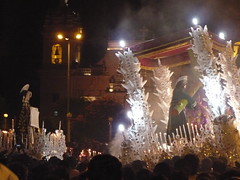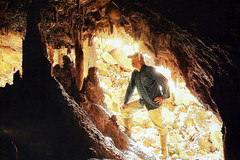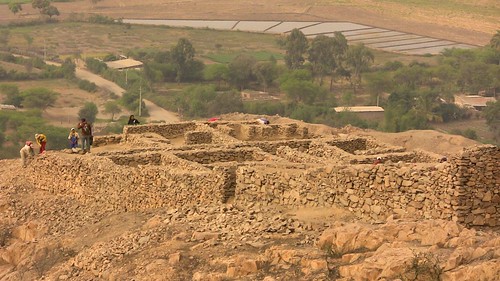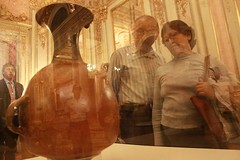Off-Road to Santo Domingo de los Olleros
An arduous climb in ageing Volkswagen Beetles took this group of travellers some 2500 metres above sea level and beyond, stopping in various Andean villages including the near-ghost town of Olleros.
By Stuart Starrs
We knew it would be tough. Unless you happen to have a helicopter there are only two ways up – in a shiny new 4×4 truck or, of course, in a trusty invincible VW Bug.
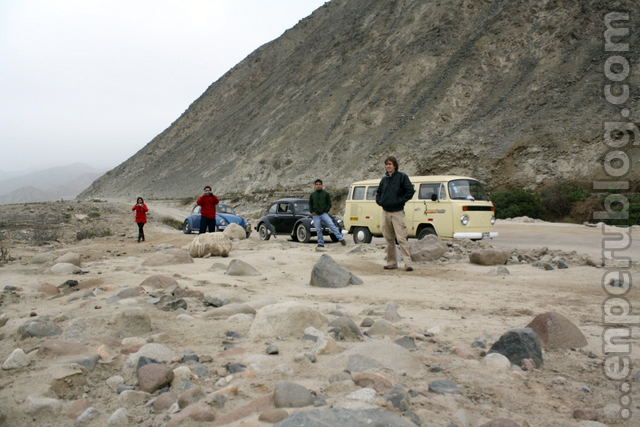
Olleros was famous for its ollas (pots) centuries ago, but little pottery is done here nowadays. Life is tough up here in the thin air. The cold winds kick up dust and blow it across the pampa while the strong sun slowly burns into your skin. It looks a world away from the bustling capital of Lima, but in reality it is only a few hours drive. Below, down on the coast, are the beaches well-to-do Limeños visit during the summer months, found at the mouth of the valley that leads up to Olleros near the town of Chilca.
We started our journey near Chilca, having bought enough food for the day – we’d be leaving civilisation and any possible hope for further supplies far behind. We were a Brazilian made Beetle with a 1300cc engine, a German made Super Beetle with a 1500cc engine and a T2 Bus, or rather, as it was also Brazilian, a kombi. My contribution to the intrepid air-cooled team was the black 1300cc. We were all carrying passengers – who’d want to pass up a trip like this?
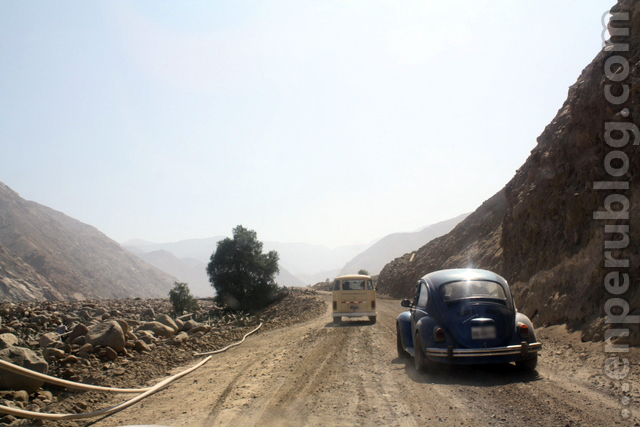
Leaving the Panamerican Highway in Chilca, we entered the dirt road that runs the length of the huge boulder-filled gully, also known as the Chilca valley. As anyone who has visited (and wanted to escape) Peru’s foggy desert coast during the winter knows, you only have to climb a few hundred metres up for some relief. Sun!
The road got progressively narrower and bumpier, it was obvious few people came up here, and clear the government had no interest in the local population. The air was getting hotter and drier, as well as thinner. It was time to tinker with the carburator and the ignition timing so these humble cars could keep running in these extreme conditions. We had left the dense damp air of the coast far behind and were quickly gaining altitude.
More than an hour of steep almost-vertical climb later we reached San Pedro de Huallanche, a small but rather bustling village with a population that seemed rather surprised to see us – or rather, our vehicles. Few vehicles are able to make the journey at all. So surely we were near our goal, the fabled village of Olleros we’d all heard about but that not a single photo existed of on the entire internet.
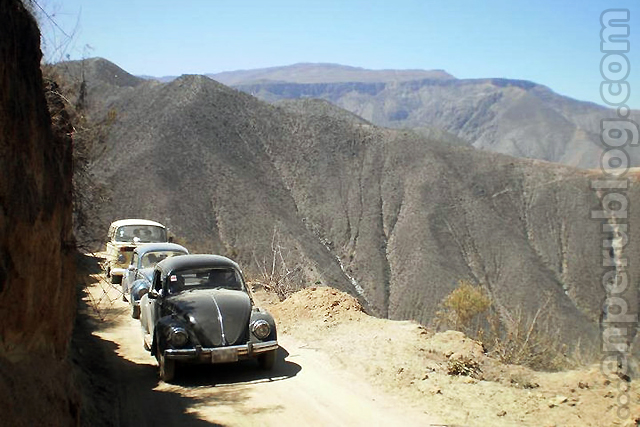
Leaving Huallanche, we saw what we were facing. High above us in the distance, really high and really far, there was a tiny point. This tiny speck was not Olleros, this tiny speck was the furthest point of the road leading too Olleros that we could see. The rough dirt road wound loosely over the terrain, climbing a metre or so for every few metres in length. We set out, cheering on our noble form of transport.
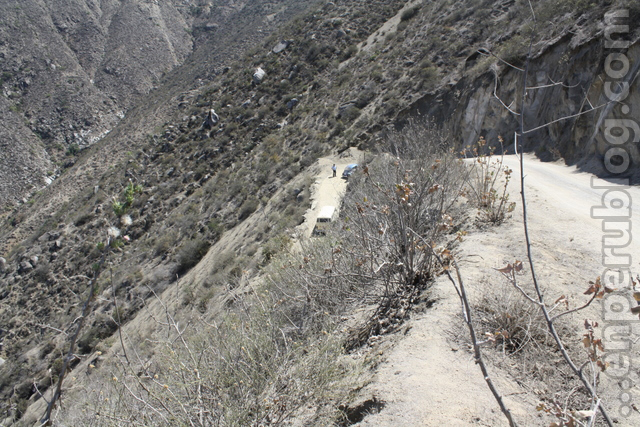
It was first gear all the way, speeds were down to that of a light jog. Going forward was fine, so long as you didn’t look at the kilometre drop down the side of the mountain that was first on your left, then on your right, then to your left again as we took on the 180 degree bends. The engineers who cut these roads into the sides of the hills had obviously planned for our visit, keen to test the Volkswagens to their very limit. The curves were horrendous. Not only were they 180 degree hairpin bends, they also involved a steep climb themselves. Our engines, hot and breathless, squeezed out every horse power they had – not a lot to begin with considering they were engines designed in the 1930s and built in the 1970s and 80s – and hauled the passengers up each curve without stalling. This went on for another hour, with brief stops to push each other out of the ditches and sandbanks that are considered roads in these parts.
Olleros was approaching, we popped over the final crest one by one, and true to form and as the legends suggest, a air-cooled VW never lets you down until it sees you to your destination. My little 1300cc had had enough. The oil pressure light blinkered on and the engine turned off, just giving me enough push to let me roll gently into the central square, the Plaza de Armas, of Olleros. Placed lovingly under the shade of a tree, refreshing water sprayed onto the engine, the mighty little thing was left to rest and recover while we looked around.
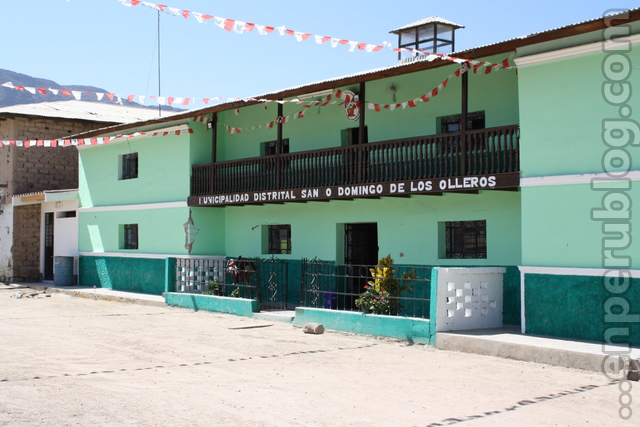
There were only a handful of people – this was the typical population. It wasn’t always like this. Decades and centuries ago the town was famous for its potters or its olleros. These times have now long gone, as has the Quechua language and the majority of the population. We had in fact just missed the visit of quite a number of ex-villagers – the night before was the big yearly village party and those with roots in Olleros return to indulge in vast sums of alcohol and music. For the rest of the year the town is almost completely abandoned. Those that stay, uninterested in the corruption and noise of the big cities, live a meagre existence and are desperately poor.
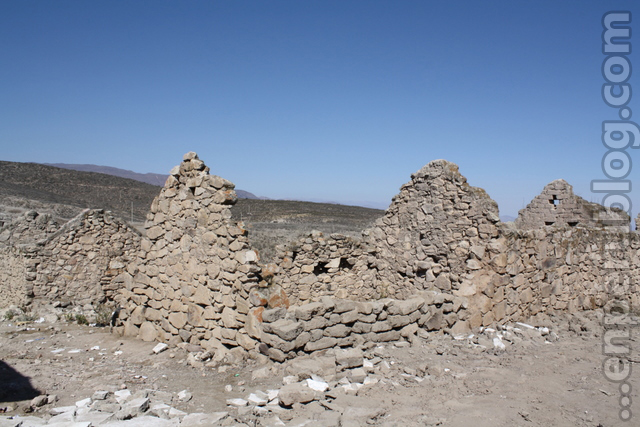
Signs of the past are still plainly visible. Leading off from the Plaza, a street, once the main street, takes you past the ruins of many dozen houses that used to be full of life. Simple in nature, most belonged to the grandparents and the great grandparents of those who decided to leave in recent decades.
Before heading off, we asking about any food being available. Kindly, a woman offered to kill a chicken, but between 10 people it wouldn’t have been much, nor could we wait the time it would take to pluck it. Saying our fair wells, we decided it was time to leave, it was already getting late.
The choice seemed easy enough – go back down the frankly horrible way we came up, or travel across the open pampa to the town of Langa. Langa was at the top of the valley of Lurín, which would take us down to coast and directly into the city of Lima. It would also take us across a change of scenery and through the town of Antioquia, one of the prettiest towns there is. We decided to give the second option ago, besides were were already as high as we could go, and the road couldn’t possibly be any worse.
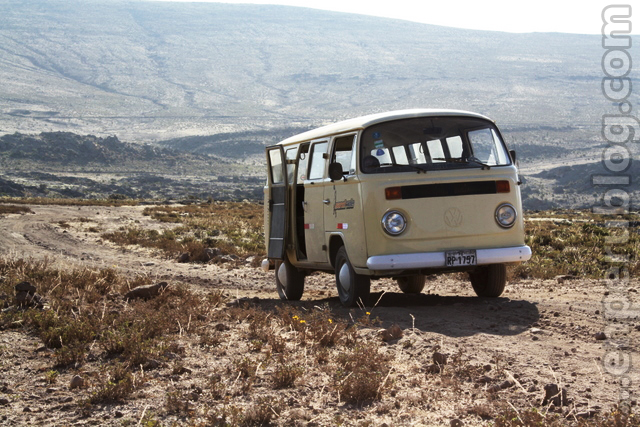
We left Olleros and were proven wrong. There was still a way to climb to reach the plateau, but at least it wasn’t as steep. The Super Beetle was the next to ask for a short break. Approaching 3,800 metres above sea level, an incredible 12,500 feet, the poor thing decided it was out of breath and started to drown on an air/fuel mixture that was all fuel and no air. Secretly happy that my VW would get a short break as a result, we finally got the Super going.

The view across the dusty pampa was spectacular, but the air was too thin to be spending too much time admiring it, much less pushing a car and playing with an engine. It was also getting late, it would be dark soon and we still had half the journey to do.
It was all down hill from here, and the increasing chilly air was just want the VW doctor ordered. We couldn’t go too fast though, not if we didn’t want to bounce out of a 1 metre deep pot hole and go rolling down a ravine… or hit a boulder and go rolling down a ravine… or slip over the edge of the road and go rolling down a ravine. Basically, the aim was to not roll down a ravine.
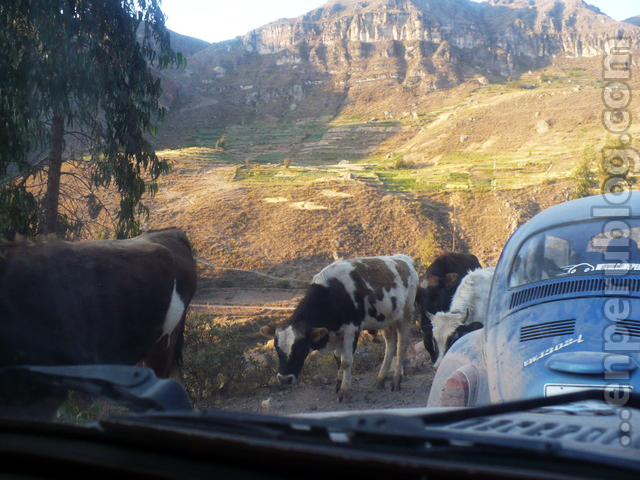
The scenery this side of the pampa was worth the trip. It obviously saw a lot more rain over here. Although poor, the villagers tending to the green fields seemed to be doing well enough. There was even plenty of livestock being driven from place to place. One cow became very interested in my car and stopped for quite some time to admire it.
Reaching Langa at sun down, we left the cars in the plaza and went in search of food. The first of the town’s two restaurants didn’t have any food at all, but at the second we were in luck. What was on the menu? Egg sandwiches of course. They also had egg sandwiches without the egg, these were slightly cheaper.
Now dark, we continued down and down into the abyss that was now hidden from us. Mostly straight, there were only a few bends at the steepest places. Down and down we went until an hour or so later we reached Antioquia, the famous painted town. It looked as pretty at night as it does in the day, but staying for long wasn’t in our plans. Fast coming up to 10pm, if we wanted to get home before midnight we’d have to get moving. A quick tinker with the engines to account for the fact we were no longer at any great altitude, we headed on our way.
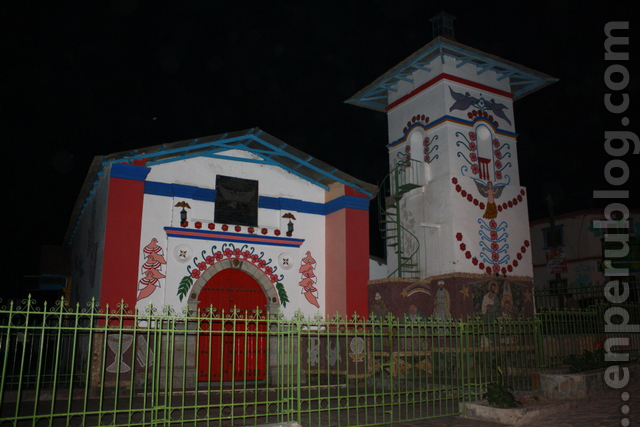
The pitch black and no visible moon provided a wonderful sight, one I’d be seeing a little more of than I’d hoped. At the back of the convoy my engine rumbled then cut out. 19hrs had seen several gallons of fuel spent. Rolling to a stopped, the lights of the Super Beetle and the Kombi faded from sight. The extra gasoline was with the Kombi.
Thankfully it didn’t take long for them to notice my absence, and the kombi came back. With a little less than a gallon of fuel left (the Super Beetle had beaten me too it) we poured it into my tank. Using the battery of the kombi, we pumped a little more gasoline out of its tank and into plastic drinks bottles, which we also proceeded to pour into my tank. Changing the fuel/air mix and some other tricks, I rolled down the rest of the way in neutral at high speed, just to be sure.
As the clock turned 12:30am we rolled into Rio Seco, half a kilometre from the edge of Cieneguilla, considered part of Lima. A Police checkpoint was surprised to see us, more so on hearing our story.
“Most cars can’t make that journey”, they said.
Gallery
Tags: antioquia, chilca, lima, olleros, volkswagen



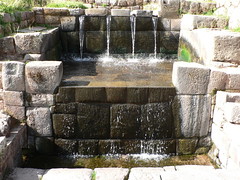
![Before & after the beach [Featured]](http://farm4.static.flickr.com/3107/2588074296_67093d2be4_m.jpg)
